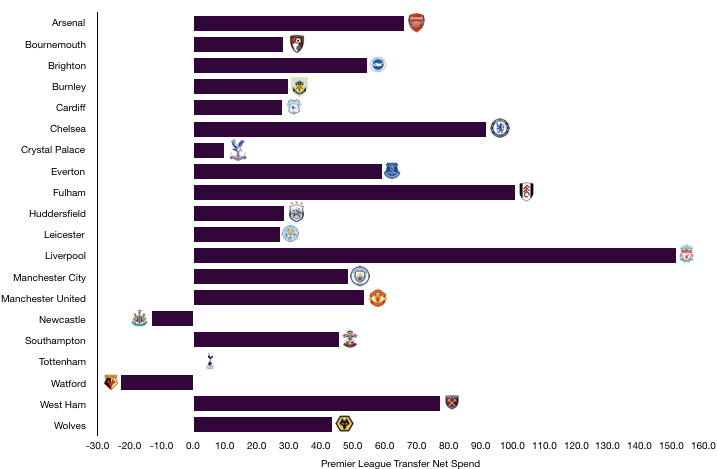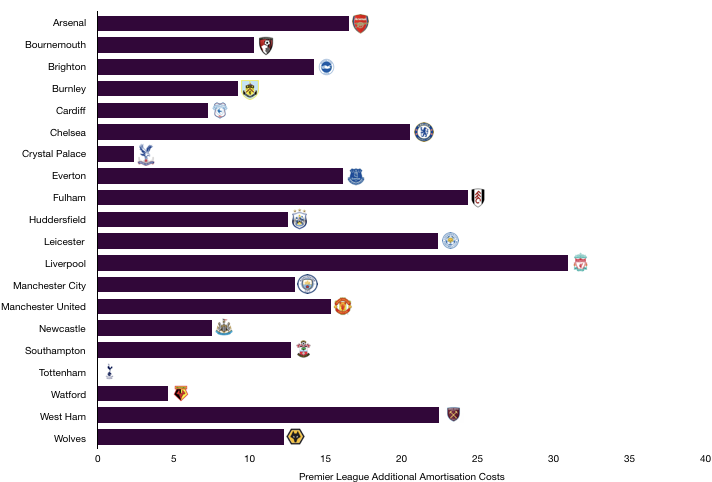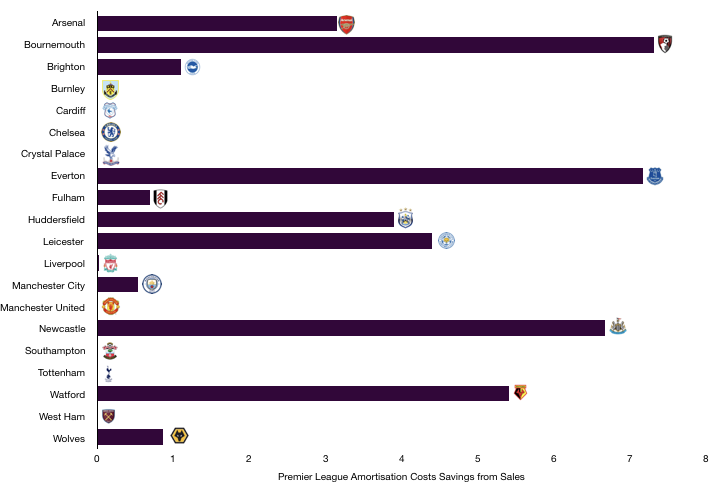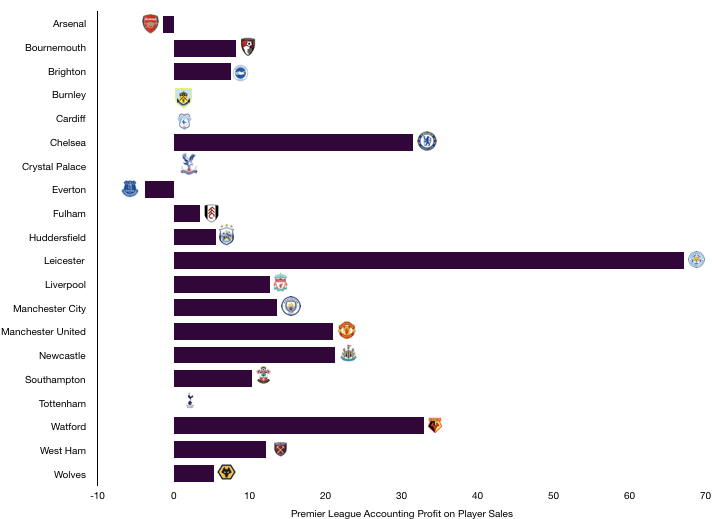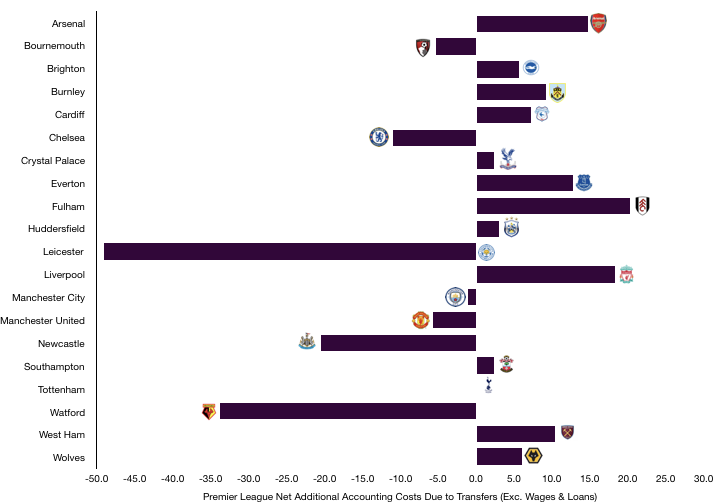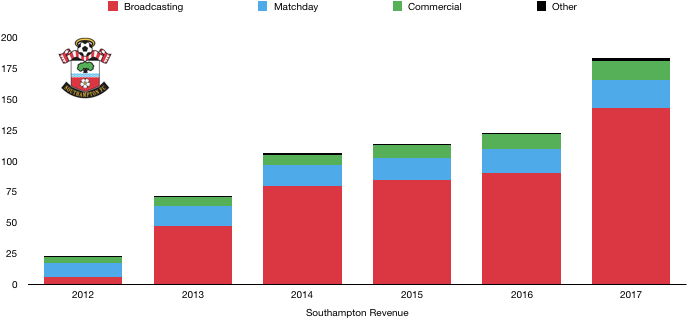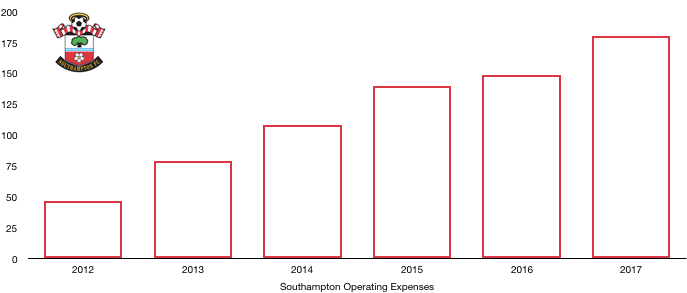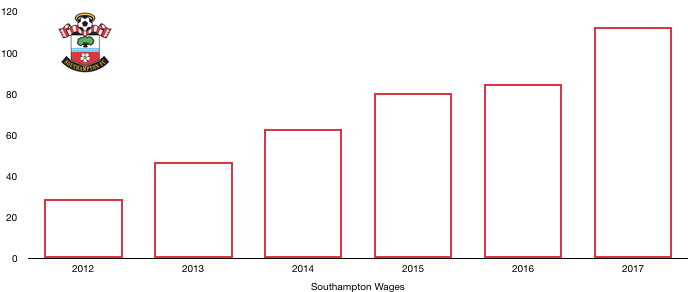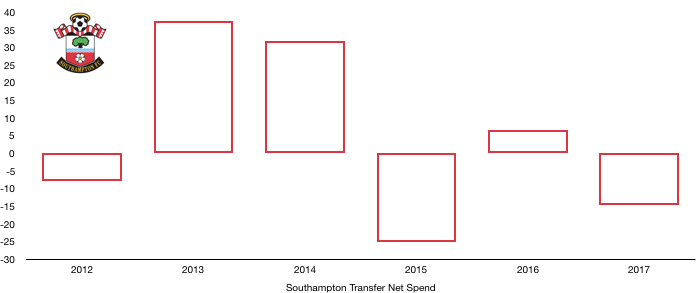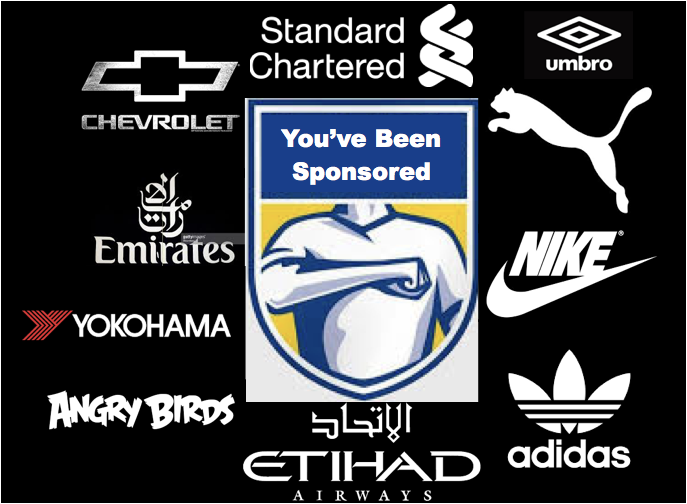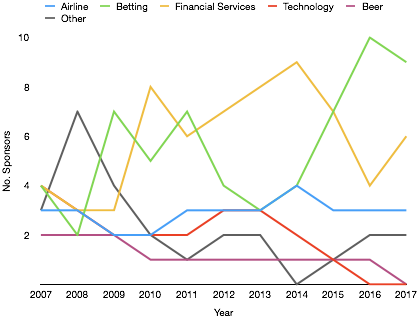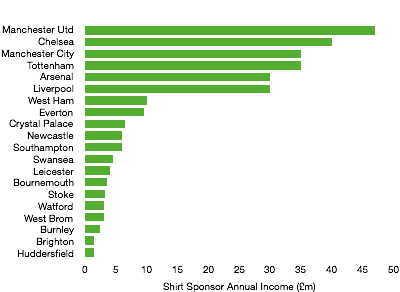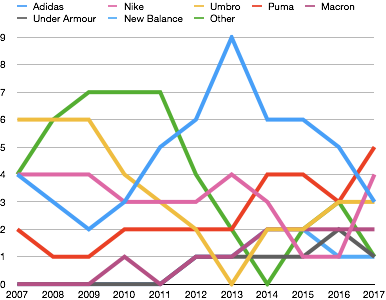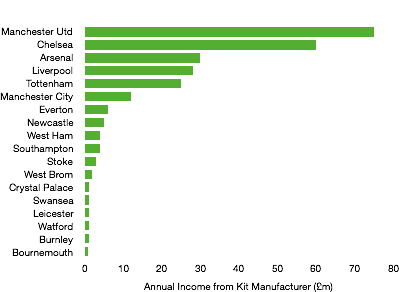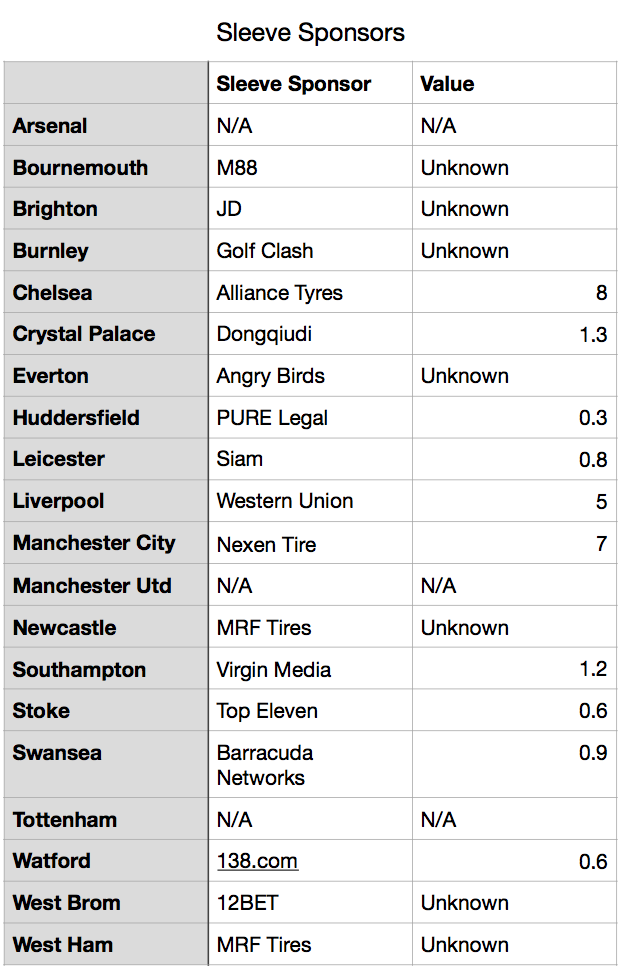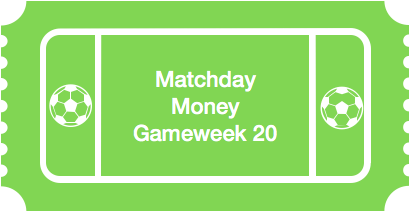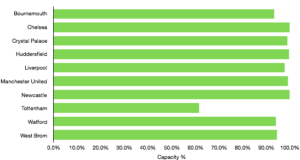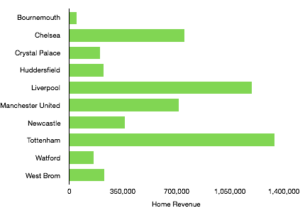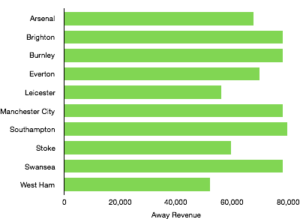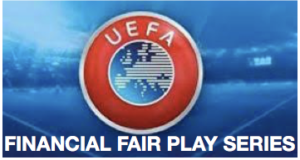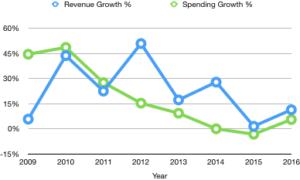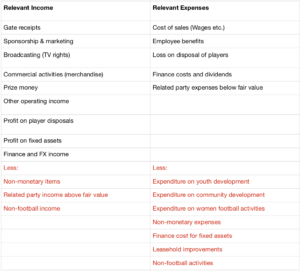As Premier League clubs grow richer, so do the players as we saw in our revenue analysis, revenue has increased dramatically and so have wages, rising 18.5% to surpass the £2.5bn barrier.
In this new Premier League world, we have wages of £150k a week as commonplace throughout the league, not just the top 6. Wages rose by over £7.5m per week and this includes the growing wage of directors and key management as their competence off the field grows in importance.
This article analyses the wages of players and directors among Premier League clubs competing in the 2016/17 season.
Who’s Up, Who’s Down?

Wages increased on average by 28.6% as the majority of clubs saw sharp increases due to increased player investment.
The promoted clubs were key contributors here with Burnley (59.4%), Middlesbrough (100.3%) and Hull (104.3%) experiencing the highest growth rates as they looked to align their wages with their newly earned Premier League riches. Interestingly, only Burnley survived despite being considerably more cautious with their wages than the other two.
Chelsea (-1.2%) and Liverpool (-0.6%) were surprisingly the only clubs to experience a fall in wages, albeit very small drops. Chelsea’s sales of high earners Oscar, Cuardrado (Loan), Ivanovic and Mikel were the main reasons for this in a season of few high-profile purchases. Liverpool similarly saw the exit of Benteke, Skrtel, Balotelli and Sakho who were all on high wages as Jurgen Klopp began his rebuild.
Tottenham saw wages grow by 26.9% as they looked to reward their players performances with new, improved contracts such as Kane, Alli and Eriksen. The purchases of Sissoko, Janssen and Wanyama supported this growth with the only high-earner to depart being Chadli.
Manchester City financial growth saw no signs of slowing down as wages grew by 33.5% as the Guardiola era began with a summer transfer spree featuring minimal departures as surplus players entered the final year or two of their high paid contracts, we expect wage growth to fall as these players depart at the end of their contracts.
Rivals Manchester United experienced a smaller rise of only 13.5% despite the high-profile purchases of Pogba and Ibrahimović due to a number of departures and the relative size of their wage bill already.
Leicester rewarded their Premier League winning squad with substantial pay rises leading to wage growth of 40% as the likes of Vardy, Mahrez and Schmeichel signed new deals which was added to by new higher profile players.
On the low side alongside Chelsea and Liverpool were Sunderland (0.6%) and Stoke (3.2%), possibly signalling they were worried about their soon to be relegations and were preparing for as much.
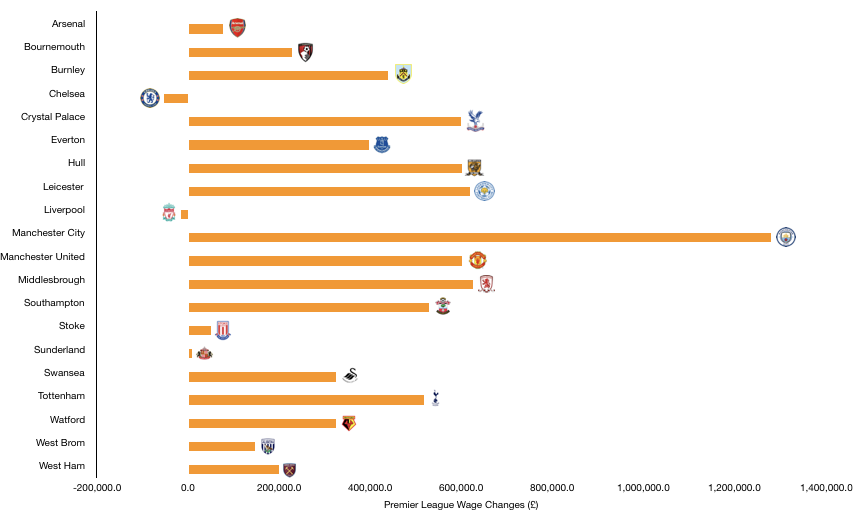
In absolute terms, the average wage rise was £375k per week, or £19.5m a year. Leading the way however was Manchester City’s astronomical rise of £1.3m a week in wages after their transfer spree to introduce Guardiola to the Premier League.
Crystal Palace saw wages rise £600k a week after the introduction of Sam Allardyce who used the winter transfer window to significantly strengthen the squad with a sizeable investment, a tactic that ultimately worked as they secured survival.
Middlesbrough also experienced a £600k a week increase but were unfortunately much less successful in doing so after suffering relegation and the unenviable wage reduction strategy required. Wages are likely to fall automatically as relegation wage clauses come into effect.
Tottenham significant contract renewals contributed to wages rising by £517k a week as Harry Kane and Co became richer after another top 4 finish for the club.
Manchester United saw wages rise by £600k a week despite a relatively small % increase due to the enormous size of their wage bill to begin with.
As mentioned, on the other end of the scale is Chelsea and Liverpool who saw minimal wage drops per week of £50k and £15k, remaining relatively stable in terms of wages after offloading deadwood.
Arsenal also remained relatively stable with wages growing by £77k a week, a minimal 2% increase for the club.
Wage to Revenue Ratio

A key performance indicator for all clubs, the wage: revenue ratio is key to a club in measuring financially stability and prudence. A high ratio suggests overspending, making profitability almost impossible whilst a ratio too low suggest over cautiousness and a failure maximise the use of resources. The average is 57% and most clubs will be aiming for a ratio of 50-55%.
The ratio shows a clear trade-off between risk and reward with clubs having to balance the need to grow and meet their targets and their financial future. Clubs near the bottom of the Premier League are likely to have higher ratios due to their lower revenues, however these clubs still spend an awful lot on wages due to the riches of staying in the Premier League.
Those higher up the table pay higher wages but see relatively higher revenue – which is what those spending large near the bottom are aspiring to.
Crystal Palace have the highest rate at 78.5% after their huge spending in the winter transfer window to preserve their Premier League status, a gamble that paid off but also potentially jeopardised their future, however such a gamble has enriched those at the club including senior management (more on this later).
Swansea’s was nearly as high at 77.3% due to low revenue and relatively high wages, a situation we hope they have remedied in 2018 after relegation which will cause this key ratio to increase.
Tottenham much discussed wage policy sees them achieve the lowest ratio at 41.4% as Daniel Levy continues to run a tight ship, something he is proud of considering their recent domestic performances, an increase in revenue will however help them increase their wages more in line with their rivals.
North London rivals Arsenal are 3rdon the list at 47.6%, another club who are notoriously known under Wenger to watch the purse strings, it must be something in the water up in North London!
Manchester United despite have one of the largest wage bills in world football have a wage to revenue ratio of only 45.3% due to the huge revenue they generate, showcasing that potentially player investment and huge wages leads to larger revenue, a model that Manchester City seem to have adopted in their earlier years.
Chelsea at 60.8% have the highest ratio due to providing players with historically high wages whilst also stockpiling young talent meaning they have more player wages on their books.
Liverpool (57%) and Manchester City (55.8%) complete the top 6 who all have lower than 61% ratios which is around the ball park most clubs should be.
Other than Chelsea, Crystal Palace and Swansea, the only other clubs with ratios above 60% are Everton (61.1%), Southampton (61.2%), Stoke (62.5%), Sunderland (66.8%) and Watford (60.3%), all clubs with aspirations of growing despite Sunderland and Stoke’s recent troubles.
Of the rest, Burnley’s low ratio (50.5%) should be commended due to their performances in 2017 and 2018. Outside of those already mentioned Bournemouth (52.4%), Hull (52.4%), Middlesbrough (53.5%) and West Ham (51.8%) all have ratios below 55%.
Rich Directors
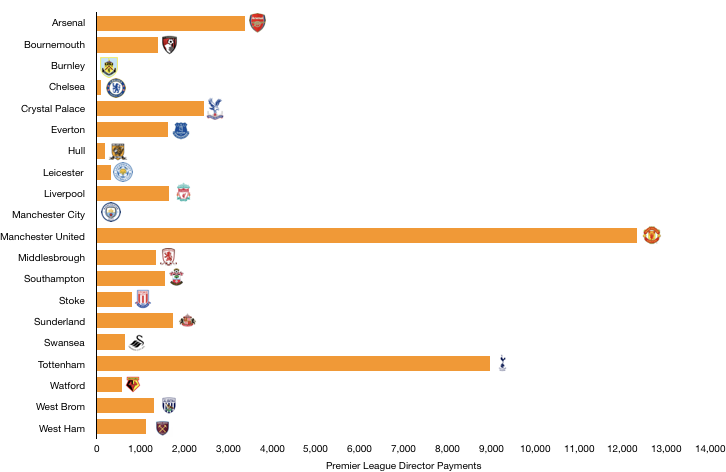
Directors and key management staff are becoming increasingly vital to the success of football clubs with their business acumen key in driving revenue from off the field sources. The work of many executives has been praised in both the transfer market and in raising the profile of their club. A good executive can propel a financially ruined club into a viable business and footballing success.
This is apparent in the fact that directors’ salaries rose 19% to £41.5m despite not playing a minute of football, with the average salary being just under £4m, working out an average of £72k a week which is a respectable Premier League footballer wage.
However, note that director salary disclosures in the accounts may not show the full picture with some directors paid in other opaque companies and through other means which are hidden and difficult to locate so the numbers here are likely to be understated to some degree.
The highest director compensation paid was by Manchester United unsurprisingly considering their global profile and stock listing. Manchester United directors were paid £12.5m last year with this including stock options that may be more valuable than recorded currently.
Tottenham are the next closet some way behind with payments of £9m with Daniel Levy paying himself £6m as a golden pat on the back for the recent successes of the club that few would argue with despite his insistence of being more prudent than that on his players.
Arsenal also pay highly with directors being paid £3.4m despite performing poorly as of late.
Liverpool’s directors were paid relatively poorly compared to their above rivals, receiving a meagre £1.6m.
Chelsea and Manchester City had minimal values in their accounts. This may have to do with Chelsea having no CEO for the majority of the year and until the appointment of Guy Laurence. The payments for other key management were likely to not have been disclosed and as such no analysis can be performed. There is a similar story for Burnley as well.
The lowest outside of this appears to be Hull with payments of only £185k made to directors.
Also, below £1m were Leicester (£325k), Stoke (£806k), Swansea (£634k) and Watford (£571k). The most surprising club here is Leicester due to the absence of any significant rise in director payments despite the incredible season they recently had.
Crystal Palace have a notably high compensation package for directors with wages paid to directors of £2.4m, with Steve Parrish paying himself all of that as the club’s only director after the club steered clear of relegation last year, a controversial decision by the Mr. Parrish.
Wages Summary
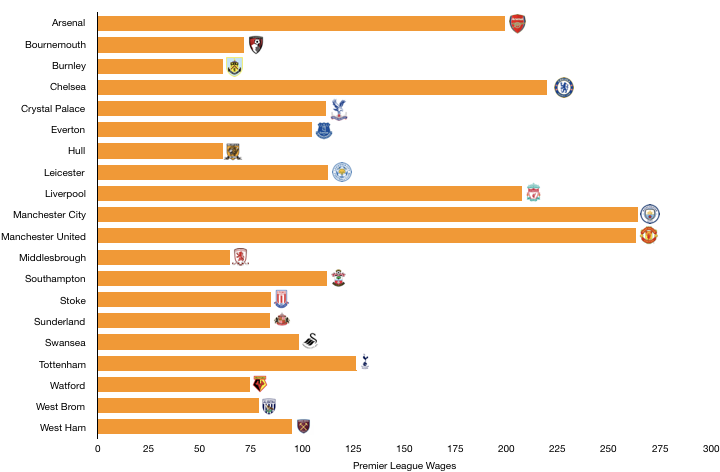
There was £2.5bn in wages last year, an eye-watering £48.1m a week with Premier League clubs incurring an average wage bill of £125m. The Premier League Top 6 account for a huge 51% of total wages, showing their unparalleled financial power.
There was a change at the top of the wage bill chart as Manchester City’s continuing financial growth saw them shell out £264.1m in Guardiola’s first season, overtaking Manchester United who paid out £263.5m in wages.
Chelsea (£219.7m), Liverpool (£207.5m) and Arsenal (£199.4m) follow at around the £200m mark as they continue to pay players top dollar to maintain their power and clutch of world class players.
The ever-rising Tottenham lag their rivals yet again in this department, paying out ‘only’ £126.9m on wages due to Levy’s tight wage policy, a strategy that may see them struggle to keep competing with their rivals.
Burnley must be commended for their comfortable survival despite operating the lowest wage bill in the Premier League of £61.2m.
Bournemouth (£64.9m) and Hull (£61.3m) were the only other clubs with wages under £70m.
On the other end of the scale, Leicester (£112.6m), Everton (£104.7m), Crystal Palace (£111.8m) and Southampton (£112.4m) were the only clubs outside the top 6 with wages exceeding £100m.
With this all said, wages are likely to continue increasing as the amount of revenue continues to rise in the Premier League and player wage demands continue to rise and the price of relegation becomes costlier. Wages are likely to increase to around £3bn in the coming year.
Thanks for reading, share with a friend!



